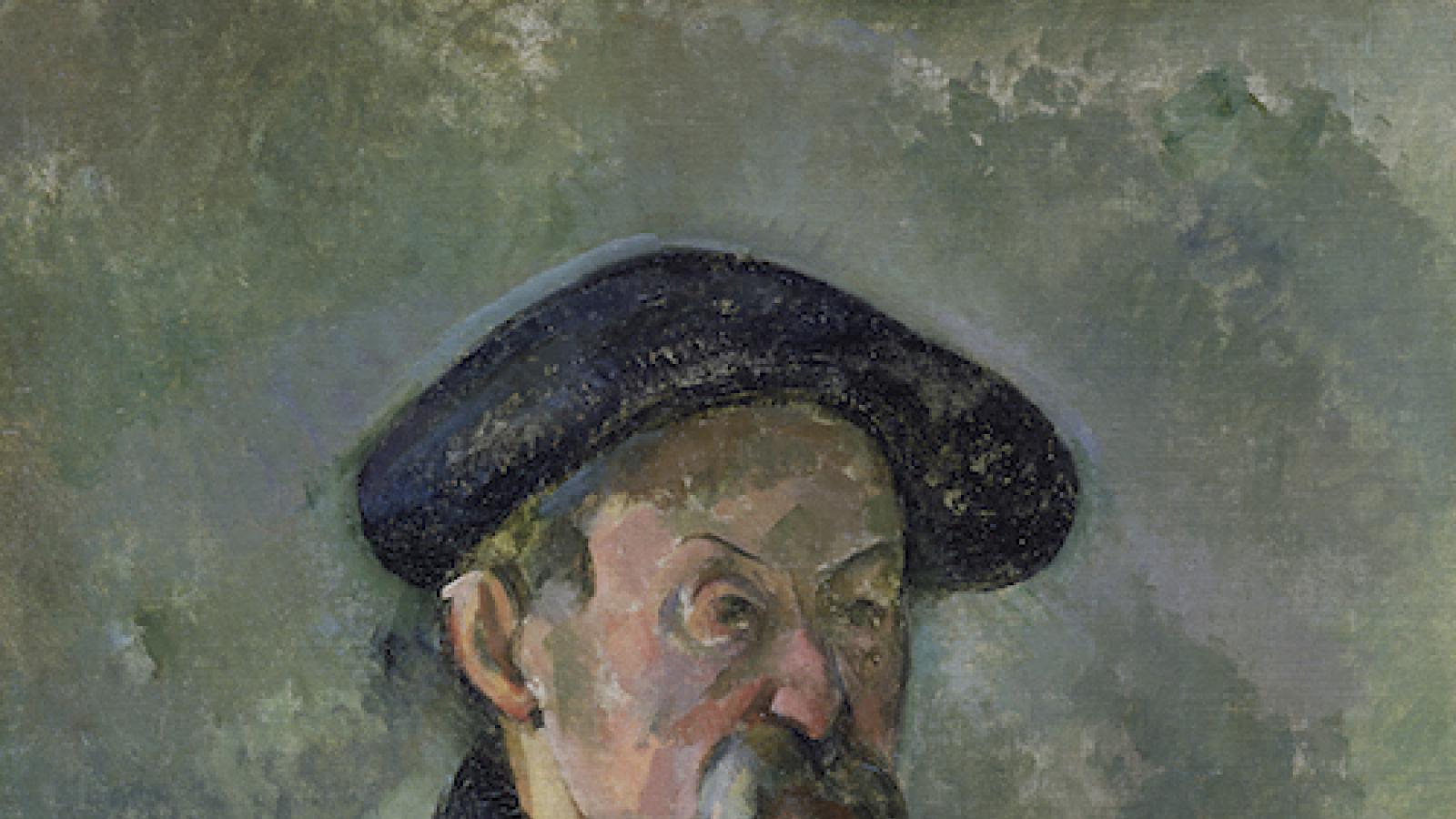Spotlight on Cezanne's Portraits at the National Gallery of Art

When you think of French Post-impressionist Paul Cézanne, you most likely think of his masterful landscape and still life paintings, often cited as the bridge between Impressionism and Cubism. But equally influential, yet much less well-known, are Cezanne’s portraits, which in some ways were both his first love and a laboratory for developing his voice as an artist. Now on view at the National Gallery of Art (NGA) in Washington, DC, with support from the Arts and Artifacts Indemnity Program administered by the National Endowment for the Arts, Cézanne Portraits is the first exhibition devoted exclusively to studying the ways in which this vital practice contributed to Cézanne’s overall success as an artist.
According to curator Mary Morton, head of the department of French paintings at the NGA, Cézanne believed, “[T]he goal of all art is the human face.” The 60 portaits gathered from around the world for the show are proof of his lifetime commitment to this goal. The exhibit—which starts in the 1860s and ends in the early 1900s—shows the portraits in chronological order to trace the development of Cézanne’s style. Walking through the exhibit, you can see Cézanne’s attempts in each portrait to discover his own interpretation of the human face. According to the wall text in the exhibit, Cézanne was fascinated by the oval of the face and regularly explored how he could simplify shapes almost to the point of abstraction. There is a clear theme of experimentation in Cézanne’s practice, and portraiture allowed him to play with his color palette, the way he handled paint and used various brushes, and the structure and volume of shapes.
In the show's accompanying catalog, John Elderfield of the National Portrait Gallery, London—the exhibit’s chief curator—noted that Cézanne only painted 160 portraits out of 1,000 total works. Although portraiture constituted a small percentage of his oeuvre, one of the last pieces he painted on his deathbed was a portrait. In the final month of his life, Cézanne worked on completing, The Gardener Vallier (1906), the last of a series on his gardener that Cézanne started in 1902. In a nod to what could be considered Cézanne’s obsessiveness with capturing a particular view of a subject, it is interesting to note that while the colors and handling of paint differ slightly from the other portraits of Vallier, the pose and setting are almost identical.
Another noteworthy detail from the exhibit is the wide range of production time for the portraits. Morton explained that a number of the paintings in the exhibit, Cézanne was able to finish in a matter of hours, while others took him years to complete. There are also a few pieces he left stillborn, such as his portraits of Gustave Geffroy (1895-1896) and Alfred Hauge (1899). According to Morton, Cézanne grew frustrated with his progress on both of these paintings and abruptly stopped working on them, never fulfilling his promise to return and finish the portraits at a later date. She went on to clarify that for Cézanne the process of creating portraiture could be laborious, also requiring a great deal of patience from his sitters. This is why his models tended to be the people closest to him including his wife, son, and friends. Quoting Cézanne‘s art dealer Ambroise Vollard, Morton said of the artist’s subjects, “They’d sit for hours with Cézanne applying maybe four brush strokes during that time.”
While Cézanne considered portraiture central to his work as an artist, his devotion to that genre was also complicated by his personality. Not only was Cézanne a perfectionist, but—as noted in the NGA exhibit—he was also said to be uncomfortable being watched by his sitters while working at his easel, preferred the solitary mediation required for working in landscape or still life. Morton explained that this is one of the reasons why Cézanne made so few portraits in comparison to his other paintings.
There is a famous account, highlighted at the exhibition, that underscores Cézanne’s slow and methodical nature as a painter. His 1899 portrait of his dealer Ambroise Vollard resulted from an arduous process of 115 sessions. Cézanne reportedly fussed at Vollard to remain motionless while he applied one stitch of color after another: “You wretch! You’ve spoiled the pose! Do I have to tell you again to sit like an apple? Does an apple move?” Surprisingly, despite the amount of effort Cézanne put toward this particular portrait, he never considered the work finished.
Even as he achieved success with other work, throughout his life Cézanne returned to portrait-making as he believed it was central to ambitious artistry. Morton noted, “He felt it was essential to utilize the same techniques he used in his still lifes and landscapes on the human face.”
Cézanne Portraits will be on view at the National Gallery of Art in Washington, DC through July 1, 2018. The exhibition is organized jointly by the National Gallery of Art, Washington, the National Portrait Gallery, London, and the Musée d'Orsay, Paris.




